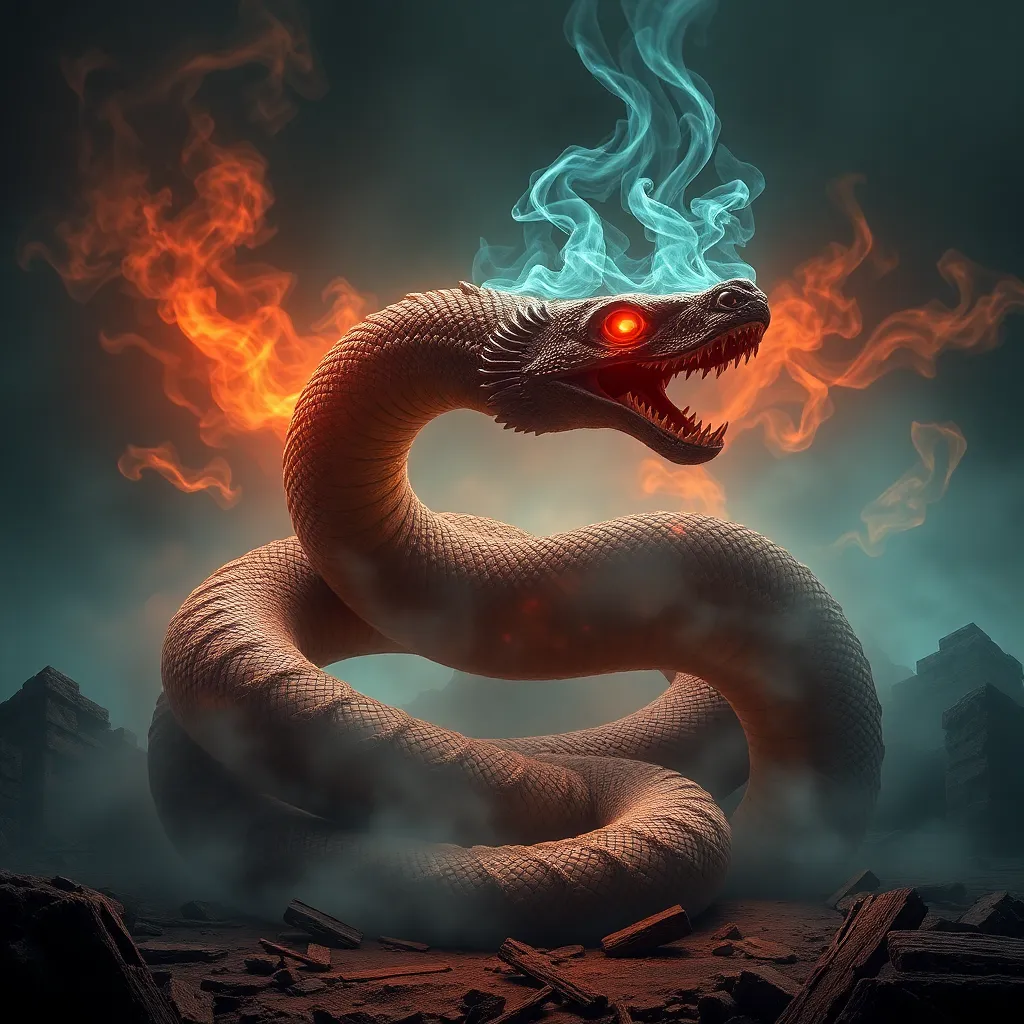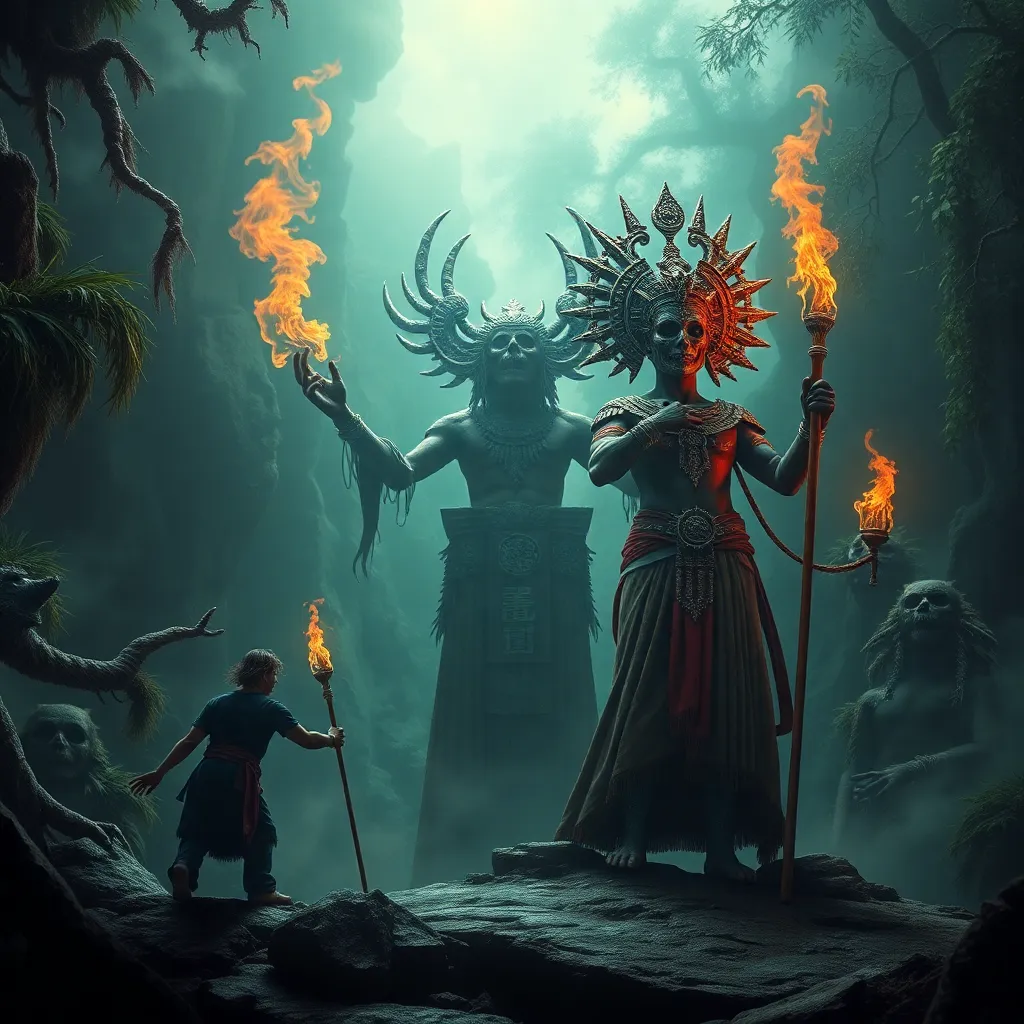The Serpent’s Legacy: Cipactli’s Influence on Mesoamerican Religion and Culture
I. Introduction
Cipactli, often depicted as a monstrous sea creature, holds a significant place in Mesoamerican mythology, particularly within the Aztec culture. As a primordial being, Cipactli is not only crucial to the creation narratives but also embodies essential themes in the region’s cosmology and religious practices.
This article aims to explore the multifaceted role of Cipactli in Mesoamerican culture, examining its mythological origins, religious significance, and lasting legacy. By delving into the various aspects of Cipactli’s influence, we uncover its importance in shaping Mesoamerican beliefs and societal structures.
II. The Mythological Origins of Cipactli
Cipactli features prominently in Mesoamerican creation myths, particularly the Aztec cosmogony, where it is depicted as a monstrous creature that existed before the world was formed.
A. Cipactli in the creation narratives
In the Aztec creation myth, Cipactli is said to have been split in two by the gods Tezcatlipoca and Quetzalcoatl, leading to the formation of the earth and sky. This act of division is symbolic of the creation process, where chaos is transformed into order.
B. Characteristics and symbolism of Cipactli
Cipactli is often described as a giant crocodile or lizard, representing both fertility and danger. Its characteristics include:
- Primordial chaos
- Fertility and creation
- Symbol of the earth’s foundation
C. Role of Cipactli in the emergence of the world
Cipactli’s dismemberment symbolizes the emergence of land from the sea, with its body parts forming various geographical features. This act establishes the foundational myth of life springing from chaos, highlighting the duality of creation and destruction.
III. Cipactli in Aztec Religion
Cipactli’s significance extends beyond creation myths, as it plays a critical role in Aztec religious practices and beliefs.
A. Cipactli’s association with deities and rituals
Cipactli is often associated with various deities, including Tlaloc, the rain god, and Coatlicue, the earth goddess. Rituals involving Cipactli typically focused on themes of fertility and agricultural abundance.
B. The significance of Cipactli in the Aztec pantheon
Within the Aztec pantheon, Cipactli is seen as a powerful entity that embodies the earth’s life-giving properties as well as its potential for destruction. This duality is crucial in understanding its revered status among the Aztecs.
C. Depictions of Cipactli in Aztec art and iconography
Artistic representations of Cipactli can be found in various forms, including:
- Codices that depict its creation story
- Statues and carvings in temples
- Pictographs illustrating its battle with the gods
These depictions serve as a reminder of Cipactli’s role in the cosmic order and the balance of forces in the universe.
IV. Cipactli and the Duality of Creation and Destruction
The theme of duality is central to Mesoamerican beliefs, and Cipactli serves as a poignant representation of this balance.
A. The balance of life and death in Mesoamerican beliefs
Cipactli embodies the idea that creation and destruction are interconnected. The Aztecs believed that for life to flourish, death is a necessary counterpart, which is reflected in the cyclical nature of their agricultural practices.
B. Cipactli as a representation of chaos and order
Cipactli’s role in the creation myth illustrates the transition from chaos to order. The gods’ struggle against Cipactli symbolizes the continuous battle for stability in the universe.
C. Historical context of creation myths involving Cipactli
Creation myths in Mesoamerica often mirror the societal struggles faced by the civilizations, reflecting their understanding of the world as a place of both beauty and chaos.
V. Influence on Mesoamerican Cosmology
Cipactli’s impact on Mesoamerican cosmology is profound, influencing various aspects of life and belief systems.
A. Cipactli’s impact on the understanding of time and cycles
The Aztecs viewed time as cyclical, and Cipactli’s narrative is integral to this understanding. The dismemberment of Cipactli is seen as the beginning of a cycle that continues to influence their calendar and agricultural practices.
B. Connections between Cipactli and other Mesoamerican cultures
Various Mesoamerican cultures, including the Maya and Olmec, also incorporated similar serpent-like deities, indicating a shared mythological heritage. These connections highlight the broader significance of Cipactli across different civilizations.
C. Comparative analysis with other mythological creatures
Comparing Cipactli with other mythological beings, such as the Maya’s Kukulkan and the Olmec’s feathered serpent, reveals common themes of creation, chaos, and the earth’s fertility.
VI. Cultural Reflections of Cipactli in Society
Cipactli’s influence extends into various cultural practices and societal norms in Mesoamerica.
A. Cipactli in rituals, festivals, and social practices
Rituals honoring Cipactli often included offerings and ceremonies aimed at ensuring agricultural fertility. Festivals celebrating the earth’s bounty were also common, reflecting the societal reliance on agriculture.
B. Artistic representations and their cultural significance
Artworks depicting Cipactli serve not only as religious artifacts but also as cultural symbols that reinforce community identity and shared beliefs.
C. The continuing legacy of Cipactli in contemporary culture
Today, elements of Cipactli’s mythology can still be seen in modern Mesoamerican cultures. Celebrations of agricultural cycles and the reverence for nature echo the ancient beliefs surrounding Cipactli.
VII. Archaeological Evidence and Interpretations
Archaeological findings provide valuable insights into the historical significance of Cipactli.
A. Key archaeological sites related to Cipactli
Significant sites, such as Templo Mayor in Mexico City, reveal artifacts and inscriptions that reference Cipactli and its role in Aztec cosmology.
B. Interpretations of artifacts and their relevance to Cipactli’s legacy
Artifacts such as figurines, pottery, and codices depict scenes from Cipactli’s myths, offering interpretations of how ancient civilizations understood and revered this creature.
C. Challenges of understanding ancient beliefs through archaeological findings
Researchers face challenges in interpreting artifacts due to the incomplete nature of the archaeological record and the complexities of Mesoamerican belief systems.
VIII. Conclusion
Cipactli’s influence on Mesoamerican religion and culture is profound and multifaceted. As a symbol of creation, chaos, and fertility, it plays a crucial role in understanding the worldview of ancient civilizations. Studying Cipactli not only enhances our appreciation of Mesoamerican heritage but also provides insights into the universal themes of life, death, and the cyclical nature of existence.
Future research on Cipactli and related mythologies will continue to shed light on the intricate tapestry of Mesoamerican beliefs, enriching our understanding of this fascinating culture.



